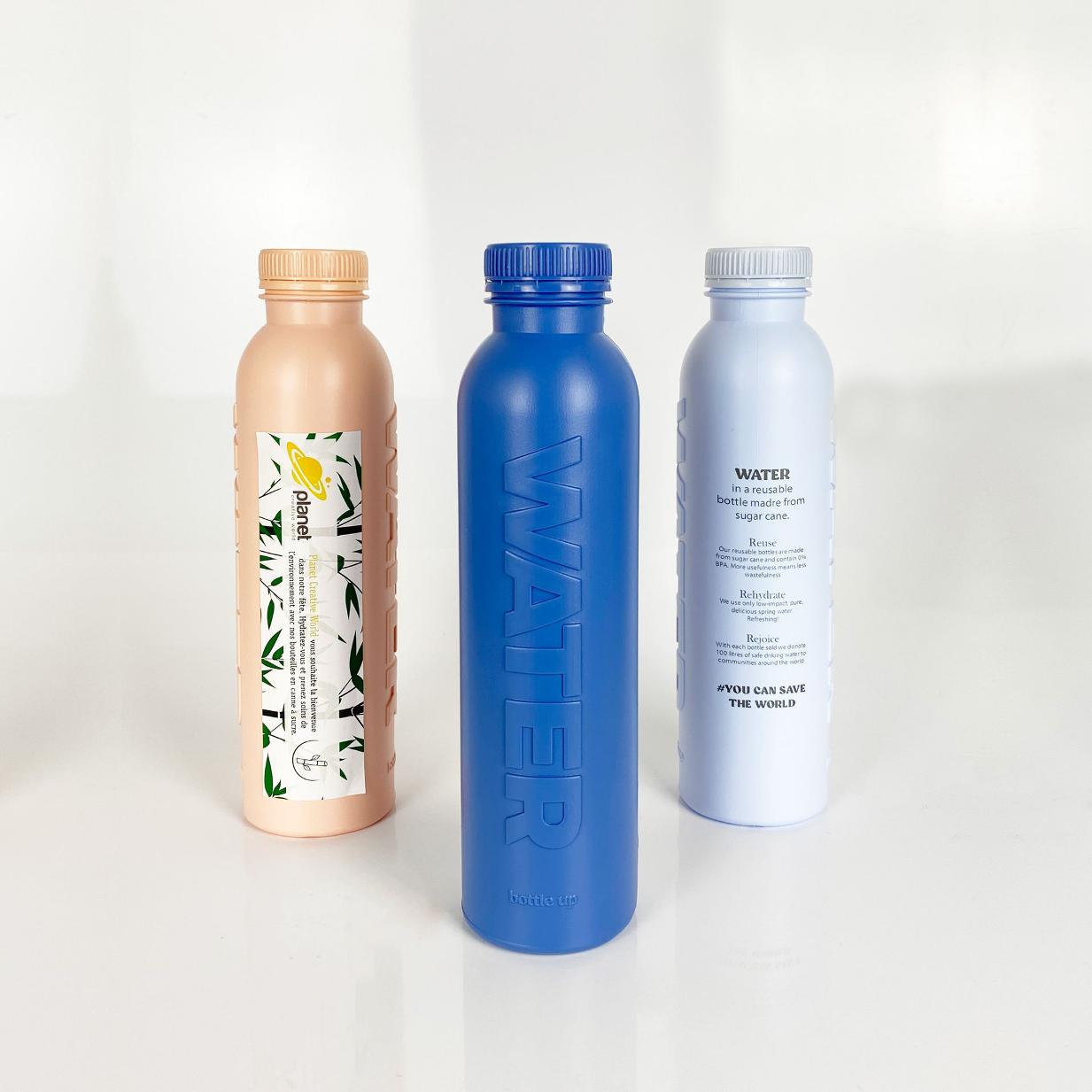Sugarcane bottles use sugarcane as raw material, a renewable source that is grown efficiently and with a low environmental impact.
This approach helps reduce dependence on non-renewable resources and promotes sustainable agricultural practices.
One of the most notable attributes of these bottles is their biodegradability. Unlike conventional plastics, sugarcane bottles decompose naturally, contributing to the reduction of persistent plastic waste.
Plus, they are compostable, meaning they can be converted into beneficial nutrients for the soil instead of contributing to pollution.
Manufacturing of biodegradable sugar cane packaging
The first step in the manufacture of biodegradable sugarcane packaging is the choice of suitable materials. These sustainable materials are carefully selected for their ability to decompose naturally without leaving toxic residue.
The manufacturing process of biodegradable sugarcane packaging involves several key stages.
Firstly, sugar cane is harvested and processed to obtain the necessary raw materials.
Then, using advanced techniques, it is transformed into a biodegradable material that can be molded to create containers of various shapes and sizes. During this process, the use of toxic additives is avoided and compliance with environmental standards is guaranteed.
Life cycle of sugarcane bottles
The life cycle of sugar cane bottles reflects its commitment to eco-friendliness. From the harvest of sugar cane to its decomposition, these bottles harmoniously integrate with natural processes, minimizing their environmental footprint and maximizing their positive contribution to the environment.
Environmental Responsibility and Sustainable Development: The choice of sugar cane bottles goes beyond a simple preference; It is an act of environmental responsibility. It contributes to sustainable development by supporting responsible agricultural practices and aligning daily actions with a long-term commitment to a cleaner, healthier future.
In conclusion, sugar cane bottles represent a milestone in the evolution towards a more sustainable world. Their positive impact on the environment, combined with their functionality, positions them as a viable and attractive option. By adopting these innovative solutions, we collectively contribute to building a future where sustainability and practicality coexist harmoniously.
Where are sugarcane containers thrown away?
Sugarcane packaging, being biodegradable and compostable, can be managed responsibly to maximize its positive impact on the environment. Here are some options for properly disposing of sugar cane containers:
Home composting
Sugarcane containers are suitable for home composting. They can decompose under composting conditions and become beneficial nutrients for the soil. It is important to ensure that composting is done correctly, following specific guidelines for this type of materials.
Municipal composting facilities
Many areas have municipal composting facilities that accept biodegradable materials. You can check to see if your community has this service and, if so, follow the guidelines for proper disposal of sugarcane containers at these facilities.
Organic waste collection
In some communities, organic waste, including biodegradable packaging, is specifically collected as part of waste management programs. You can put the sugarcane containers in the organic waste container according to local guidelines.


